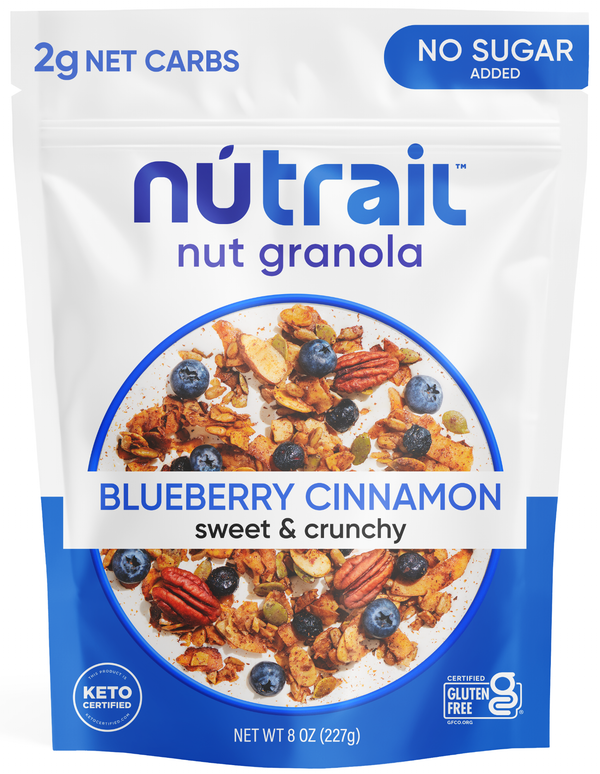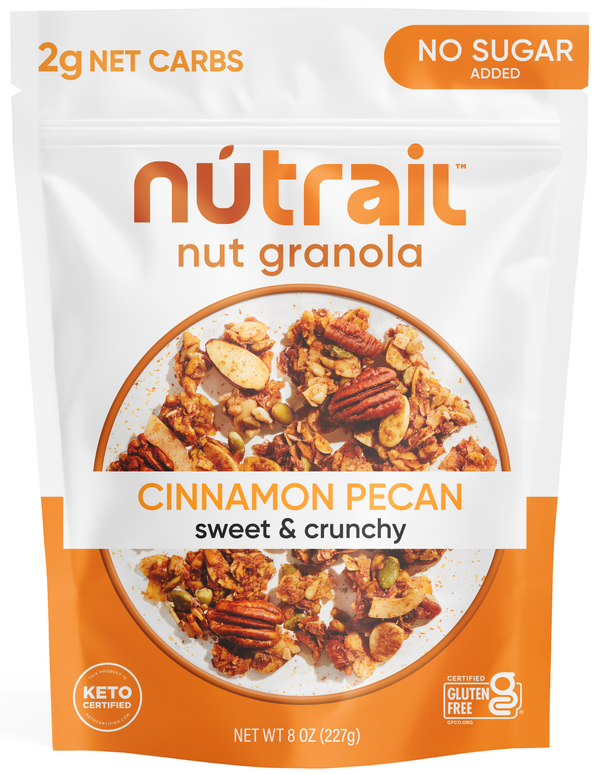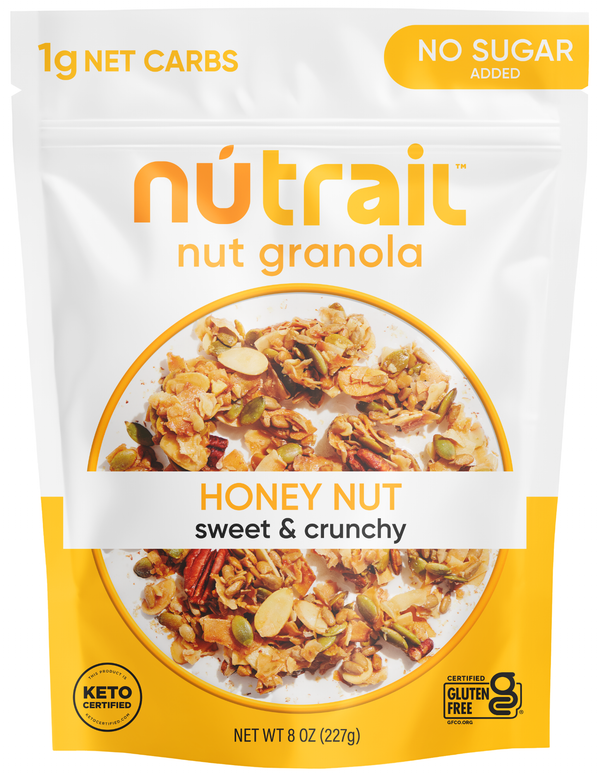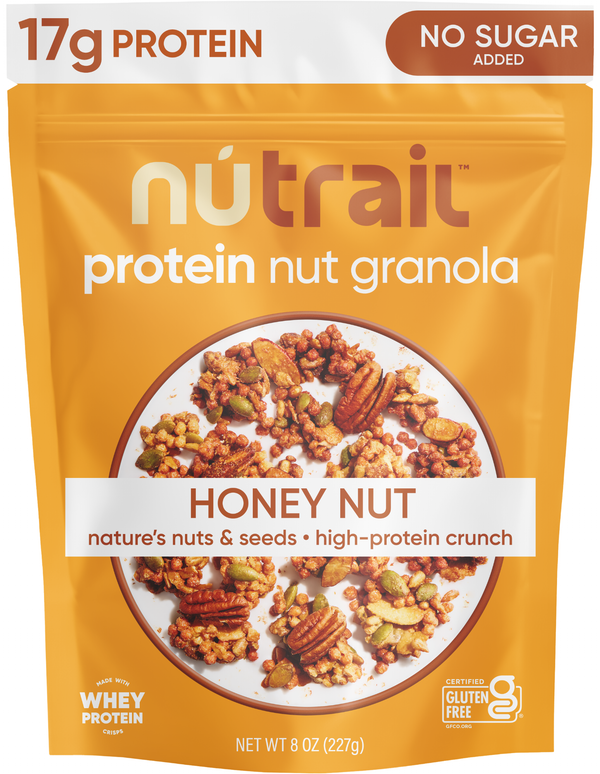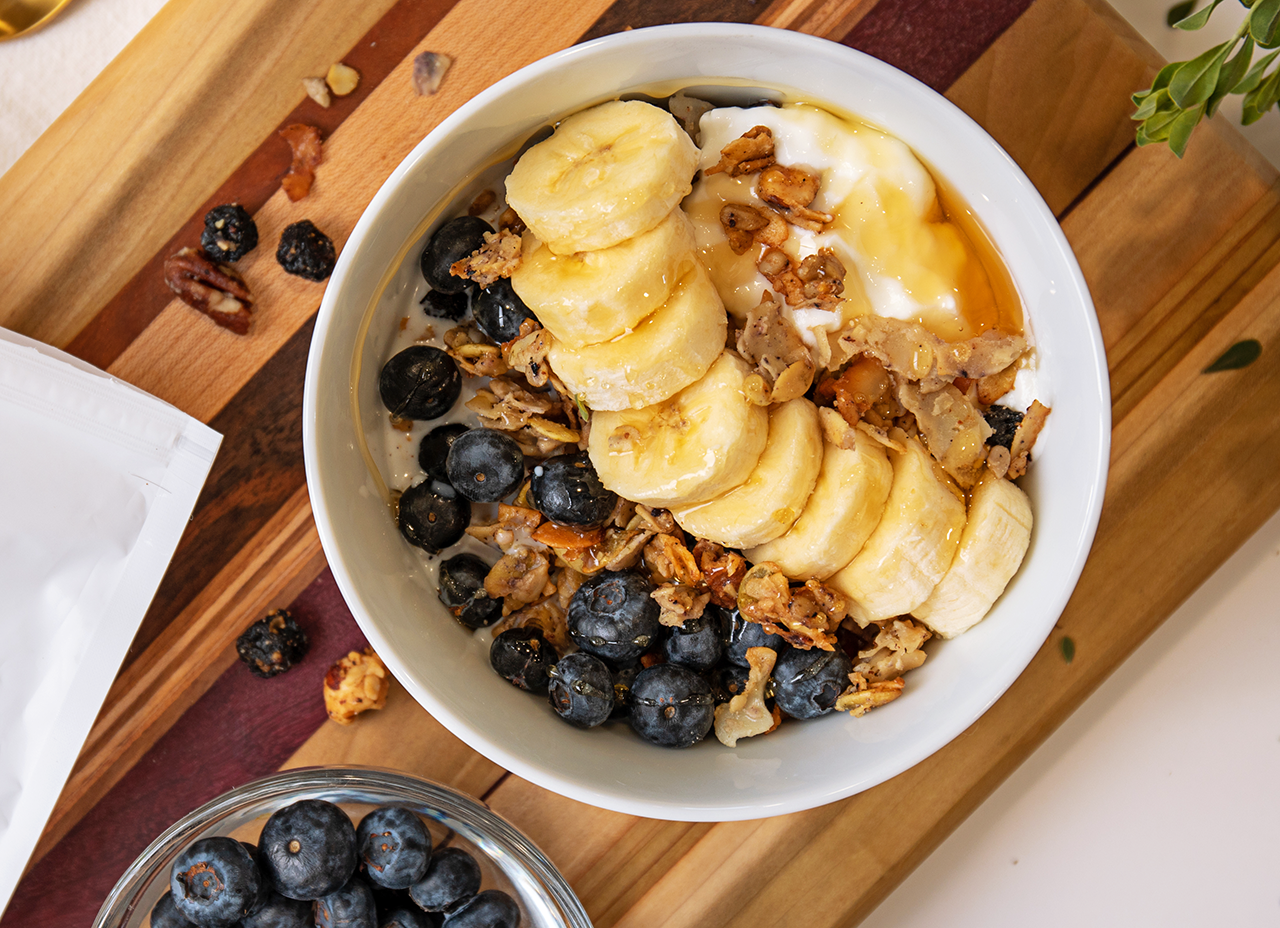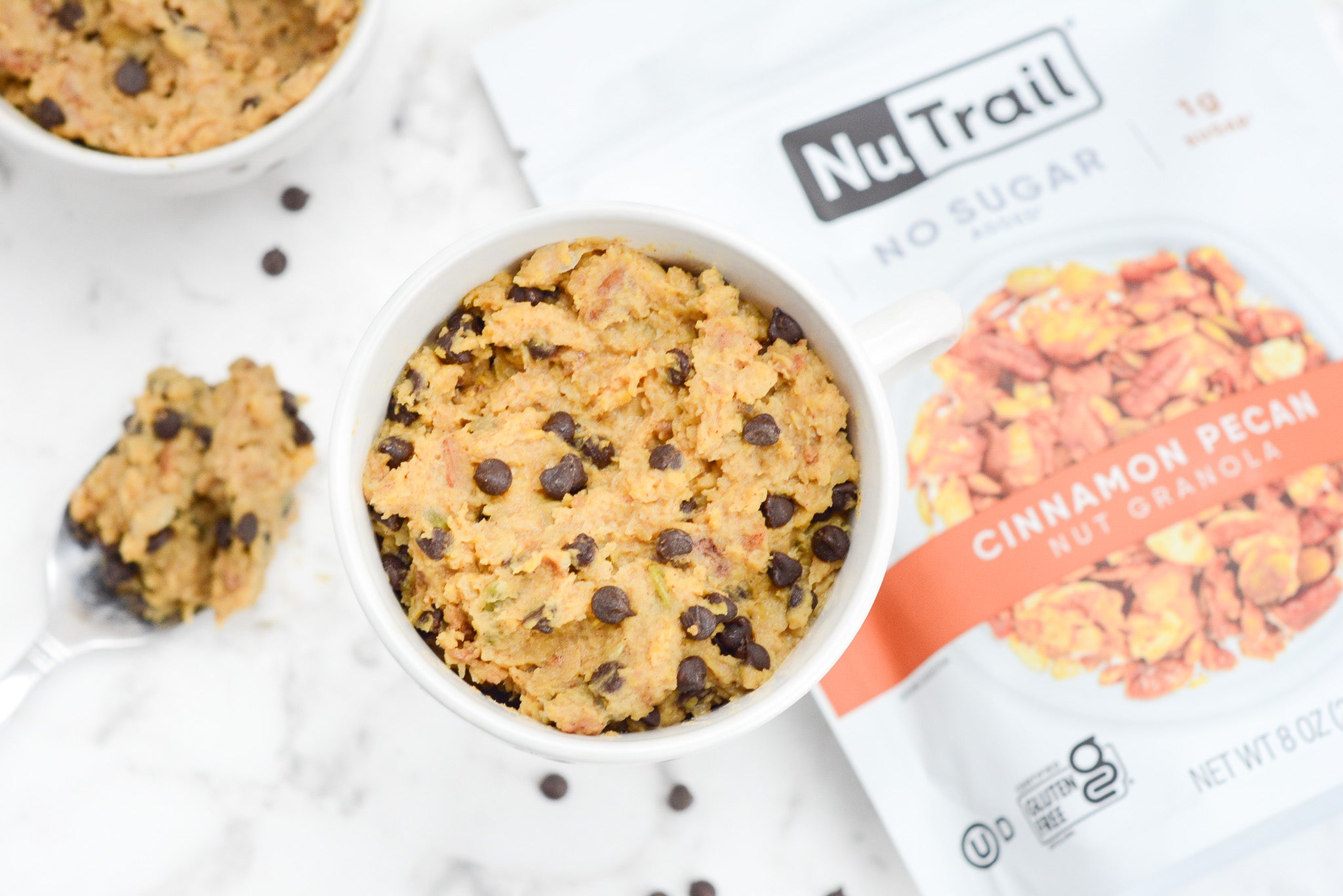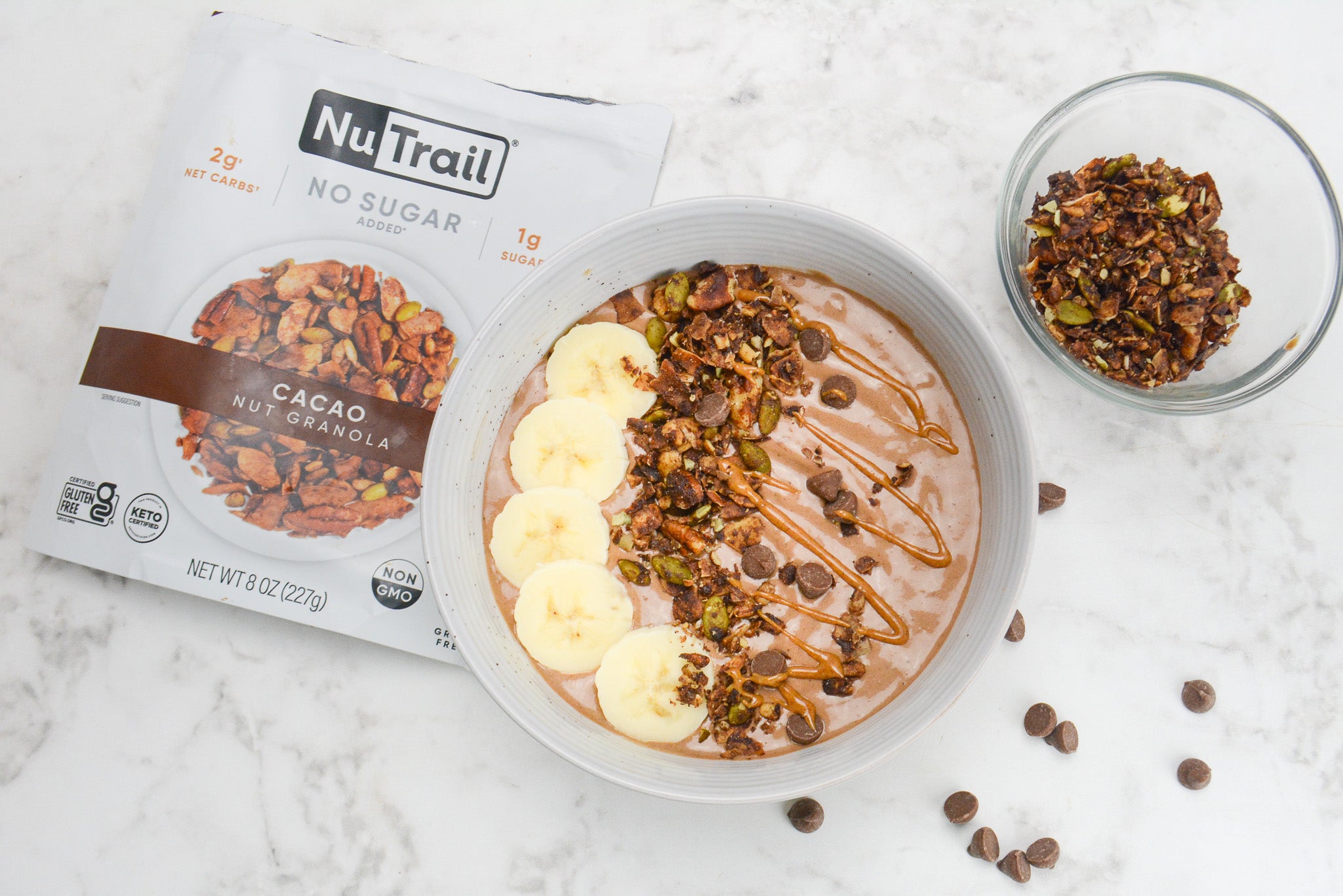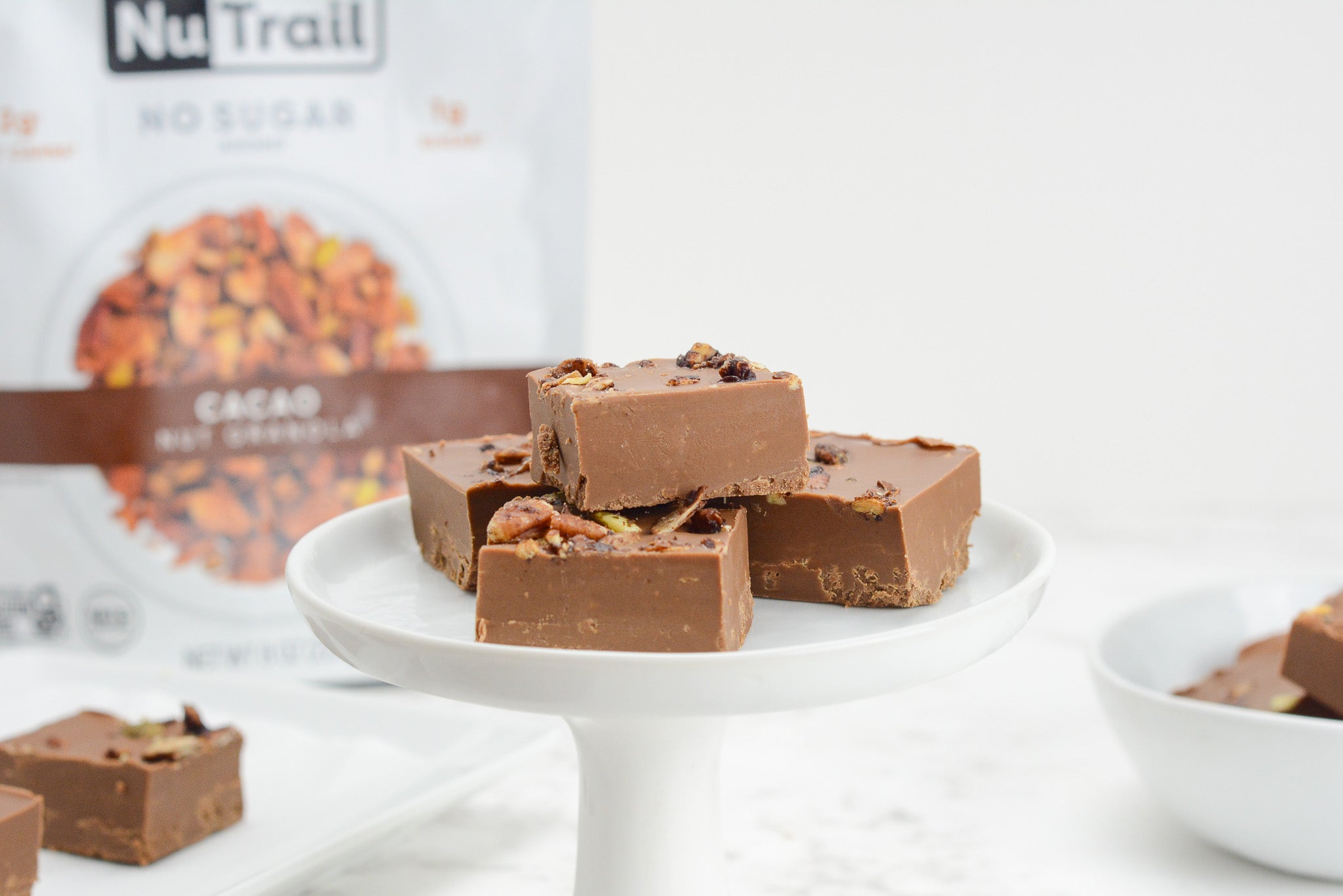Natural sugar and added sugar- you’ve probably heard these terms before or noticed them labeled on food products, but do you know the difference between them, how much is recommended per day, and how to understand sugar on a food label? Keep reading to learn all about added sugar and natural sugar from Registered Dietitian, Chelsea Rice.
WHAT ARE NATURAL SUGARS?
Natural sugars are sugars that are naturally present in foods. Examples of foods with natural sugars include fruits, vegetables, dairy products, and some legumes and grains. Unlike foods with added sugar, foods that have natural sugars also have naturally occurring nutrients such as vitamins, minerals, phytonutrients, fiber, water, and more. These nutrients are important for maintaining good health and decreasing the risk of chronic diseases such as heart disease and diabetes.
Foods with natural sugar do tend to have health benefits, but one important thing to keep in mind is that consuming too much natural sugar can also be harmful and lead to high blood sugar and weight gain. Therefore, it is important to consume natural sugar in moderation as part of a balanced diet.
WHAT ARE ADDED SUGARS?
Added sugars are sugars that are not naturally present in foods, but instead added as a part of the manufacturing process. Sweet foods and beverages are likely to have added sugar including ice cream, baked goods, and sodas, but it is also common to see added sugar in products like crackers, pasta sauces, and salad dressings.
So, how much added sugar is recommended per day? The 2020-2025 Dietary Guidelines for Americans recommend that no more than 10% of your daily calories should include added sugar (1). The American Heart Association recommends that women should keep added sugar consumption to a maximum of 6 teaspoons (24g) per day, while men should consume no more than 9 teaspoons (36g) of added sugar per day (2).
READING FOOD LABELS FOR ADDED SUGAR
Food labels haven’t always been straight forward when it comes to added sugar. In fact, it has only been in the past few years that the Food and Drug Administration (FDA) started to require all food labels to include added sugar. When reading a food label, you will now see both “total sugars” and “added sugars” listed. Total sugars include the amount of both natural sugar and added sugar in a product. Underneath total sugars you will see a line that says “includes ___ added sugars”. This is where the product separates out the amount of added sugar in the product. All labels for foods and beverages with added sugars list the number of grams as well as the percent daily value (%DV) on the Nutrition Facts label.
The other place you can look for added sugars on a food label is under the ingredients. There are many names for added sugar, including but not limited to, “sugar”, “syrup”, and anything that ends in “ose” (i.e. glucose). The higher up on the ingredient list, the more added sugar there is. For example if “brown rice syrup” is the first ingredient to be listed, that means that product is higher in sugar than if it was listed last on the ingredient list.
The problem with added sugar is that many products that contain added sugar do not contain any or very little essential nutrients, including vitamins, minerals, and fiber. A diet high in added sugars has also been linked to obesity, diabetes, heart disease, liver disease, and even cancer (3). Therefore, it is important to be mindful of the amount of added sugar that you are consuming on a daily basis.
Many of your favorite foods might contain more added sugar than you think, which is why it is always important to check the Nutrition Facts label and ingredient list. Granola is an example food that usually contains added sugar. Some products on the market even have over 10g per serving. If you love granola, but are looking for a lower sugar alternative, NuTrail is just for you! NuTrail has created the best high-quality, low sugar nut granolas. With only 1-2g of total sugars and no added sugar, NuTrail nut granola is the perfect addition to your next bowl of yogurt, smoothie, or baked good!
HOW TO REDUCE ADDED SUGAR
You don’t have to completely give up on the foods you love, but instead you can reduce your added sugar intake by being more mindful of the products you are purchasing at the grocery store. First, start by looking at the Nutrition Facts label to determine how many grams of added sugar are in a product. If you are curious what type of added sugar a product is using, you can look further into the ingredients that will be listed in order of quantity, from highest to lowest.
At the end of the day, the best way to reduce your added sugar intake is to make small, simple changes. Look for products labeled with “no added sugar”. Stock up on naturally sweetened foods such as your favorite fruits. Replace soda with sparkling water. It might sound intimidating, but as you start to decrease your added sugar intake your taste buds will adjust and your body will thank you!
RESOURCES:
- https://www.dietaryguidelines.gov/sites/default/files/2020-12/Dietary_Guidelines_for_Americans_2020-2025.pdf
- https://www.heart.org/en/healthy-living/healthy-eating/eat-smart/sugar/added-sugars
- https://www.ncbi.nlm.nih.gov/pmc/articles/PMC5133084/
